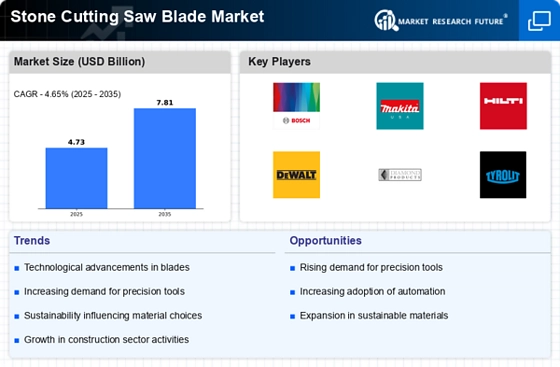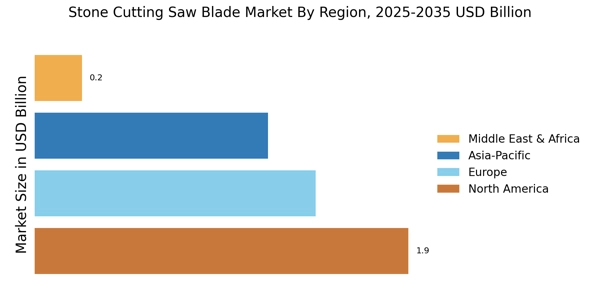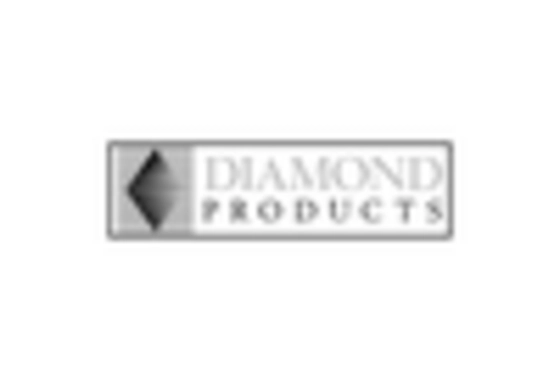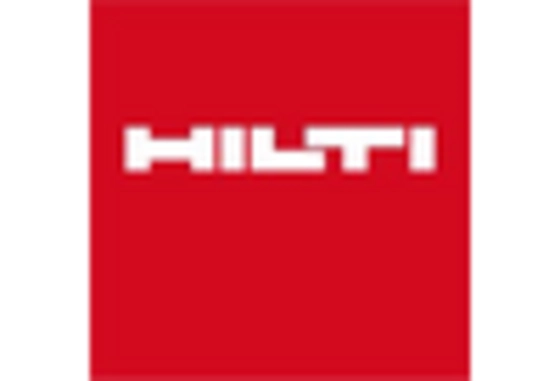Technological Innovations
Technological advancements play a pivotal role in shaping the Stone Cutting Saw Blade Market. Innovations in blade materials and manufacturing processes have led to the development of more durable and efficient saw blades. For instance, the introduction of diamond-coated blades has significantly improved cutting performance and longevity. Market data indicates that the adoption of advanced technologies is expected to increase the efficiency of stone cutting operations, thereby driving demand. As manufacturers continue to invest in research and development, the Stone Cutting Saw Blade Market is likely to witness a shift towards high-performance products that cater to the evolving needs of end-users.
Rising Construction Activities
The Stone Cutting Saw Blade Market is experiencing a surge in demand due to increasing construction activities across various sectors. Urbanization and infrastructure development projects are driving the need for efficient stone cutting tools. According to recent data, the construction sector is projected to grow at a compound annual growth rate of approximately 5.5% over the next few years. This growth is likely to enhance the demand for stone cutting saw blades, as they are essential for cutting and shaping stone materials used in construction. Furthermore, the expansion of residential and commercial buildings necessitates the use of high-quality saw blades, which could lead to increased sales in the Stone Cutting Saw Blade Market.
Increased Focus on Safety Standards
The Stone Cutting Saw Blade Market is also being driven by an increased focus on safety standards within the construction and manufacturing sectors. As regulations surrounding workplace safety become more stringent, there is a growing demand for saw blades that meet these safety requirements. Manufacturers are responding by developing blades that not only enhance cutting efficiency but also prioritize user safety. Market data suggests that products designed with safety features are likely to gain traction among consumers, thereby influencing purchasing decisions. This emphasis on safety is expected to propel the Stone Cutting Saw Blade Market forward, as companies strive to comply with evolving safety regulations.
Expansion of Stone Processing Industry
The expansion of the stone processing industry is a significant driver for the Stone Cutting Saw Blade Market. As more companies engage in stone quarrying and processing, the need for high-quality cutting tools becomes paramount. Recent statistics indicate that the stone processing sector is experiencing robust growth, with an increasing number of quarries and processing facilities being established. This growth is likely to create a substantial demand for stone cutting saw blades, as these tools are essential for efficient stone processing operations. The Stone Cutting Saw Blade Market stands to gain from this trend, as manufacturers align their offerings with the needs of the expanding stone processing sector.
Growing Demand for Aesthetic Stone Products
The Stone Cutting Saw Blade Market is influenced by the rising consumer preference for aesthetic stone products in residential and commercial spaces. As homeowners and designers increasingly opt for natural stone finishes, the demand for precision cutting tools has escalated. Market analysis suggests that the demand for decorative stone products is expected to grow, leading to an increased requirement for specialized saw blades. This trend is particularly evident in the landscaping and interior design sectors, where unique stone features are becoming more popular. Consequently, the Stone Cutting Saw Blade Market is likely to benefit from this shift towards aesthetic enhancements in construction and design.


















Leave a Comment